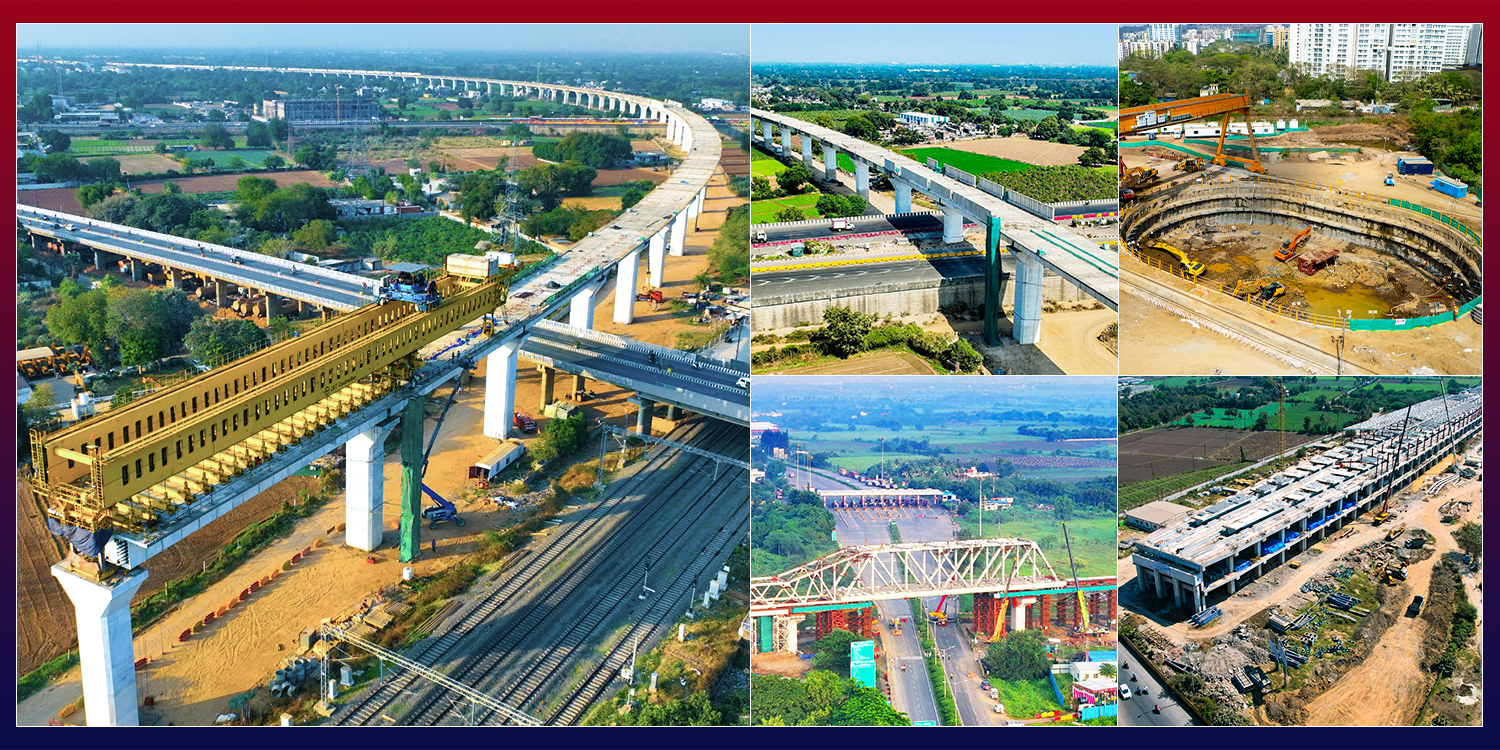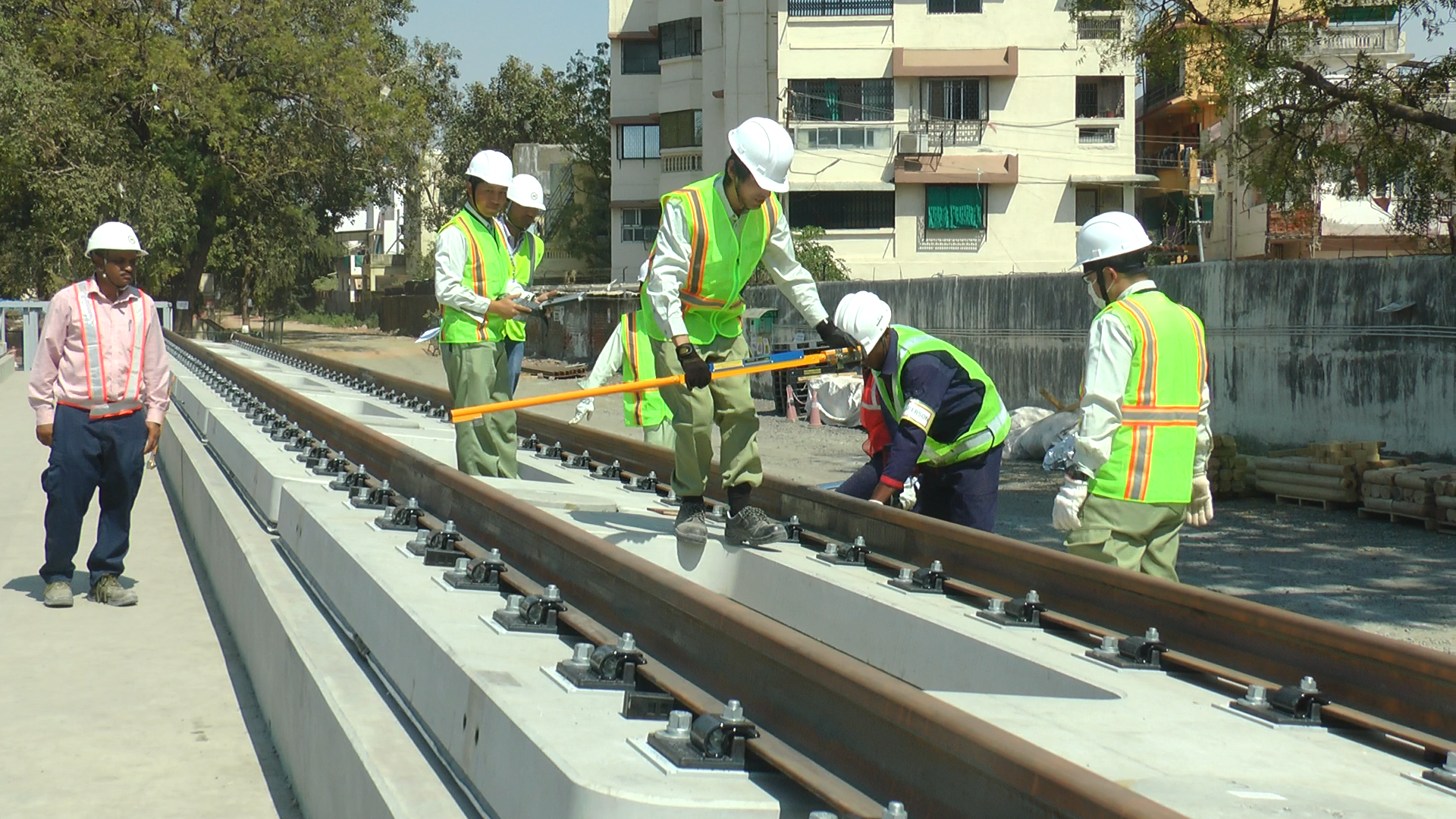Slab Track structure is a unique feature of Japanese High Speed Railway, popularly known as Shinkansen. Slab Track was invented and has evolved in Japan and now the term is synonymous with High Speed Track. The first HSR in Japan i.e. Tokaido Shinkansen began operational in 1964 between Tokyo and Shin-Osaka. Conventional ballasted track structure was adopted in Tokaido Shinkansen. Track geometry of conventional ballasted tracks used to disturb frequently with the increase in traffic density. Due to problem of disturbance of track geometry coupled with reduction in time available for maintenance and labour shortage, the need was felt to introduce a low maintenance track. As a result former Japanese National Railway (JNR) started a study of Slab Track in 1965 and introduced the same widely in further Shinkansen lines like Sanyo, Tohoku and Joetsu Shinkansen.
The structure of Slab Track is explained in figure-1. Slab Track consists of precast Reinforced Concrete (RC) slab, over which fastening devices and rails are fitted. Over the roadbed concrete, either on viaduct or in tunnel, track bed concrete of about 300 mm and circular concrete dowel/ anchors of diameter 520 mm and height 250 mm are casted at regular interval of 5 meters. Over the track bed concrete, the track slab is laid and a gap of about 50 mm is created between them which is filled by pouring Cement Asphalt mortar in especially designed synthetic bags. CA mortar is a buffer material for Slab Track which provides resilience to the whole structure. The Concrete Anchors prevent Slab Track from moving either in the longitudinal or in transverse direction. The RC slabs for Slab Tracks are produced in a factory. The track slab is 2200 mm wide, 4900 mm long and 190 mm thick. One track slab weighs around 3.9 tons. The production cycle of a track slab is about 24 hours as explained in figure-2. This is followed by 7 days of water curing. After this the track slab is ready for installation.
From Japanese experience, it has been learnt that although initial construction cost of Slab Track is about 1.3 times higher compared to conventional ballasted track, but if we consider the life cycle cost in the long run, Slab Track seems to win the race. Because of this fact, the Shinkansen lines constructed in Japan after the first line i.e. Tokaido Shinkansen (Tokyo to Shin Osaka), have predominantly used Slab Track as a track structure. Figure-3 shows proportion of ballasted track and Slab Track on each Shinkansen line in Japan. Following points explain how the slab track is economically advantageous over ballasted tracks:
Fig.1-Structure of Slab Track Fig.2-Production cycle of track slab
- Figure-4 shows number of track irregularities per kilometre length which exceeds the target value for riding comfort of Shinkansen. This shows that Slab Track keeps the track in better condition than ballasted tracks do. Figure-5 shows comparison of maintenance cost of ballasted tracks and Slab Track on Sanyo Shinkansen. It can be seen that the maintenance cost of Slab Track is about 1/4 of ballasted track. From Japanese experience it has been learnt that higher initial construction cost of Slab Track than ballasted track gets compensated in about 9 years due to less maintenance and labour requirement for the former.
- Slab track structure is lighter compared to ballasted track structure, therefore overall construction cost of new line, including viaduct cost, can be less. Also, height of Slab Track is less compared to ballasted track. Reduced track height results in the reduction of cross sectional area of tunnel, thus lowering the construction cost of tunnel by around 30%.
- In the effort to reduce the cost of Slab Track, frame type track slab were developed in Japan. Frame type track slab has a hollow portion in slab in contrast to solid track slab. The redundant central portion of the latter is removed, thus saving the extra cost involved in concrete, reinforcement and CA mortar. This has an extra advantage of less wrapping effect of concrete and easier handling due to lighter structure.
- Fast construction is possible in track slab due to precast segments and special track machine which can handle and place 5 track slabs at a time.
- Figure-6 shows displacement diagram of Slab Track and ballasted track models. It can be inferred that flexural stiffness of Slab Track is considerably higher compared to ballasted track therefore Slab Track structure deflects considerably less than the ballasted track structure. The stress level in the subsoil of ballasted track is much higher, hence the track geometry of ballasted track gets deteriorated frequently. In case of Slab Track the track deformations are smoother by distributing the loads to a larger area. On the other side, the ballasted track deformation is sharper near the point where load is located and almost un-deformed at the areas far from load. This is due to significantly lower stiffness of the ballasted track bed which is unable to distribute the forces in larger area.
- For the design speed of 350 kmph, an accuracy of ± 1mm is required to be achieved in gauge and height of rail. Similarly the accuracy for level and alignment to be achieved on 10 m chord is ± 2 mm. It is possible to achieve the finished rail surface of this high accuracy in Slab Track with the use of rail fasteners that allow variable adjustment. Figure-7 shows a type of fastening device (Direct-8 type) used for Slab Track.
Fig.3-Proportion of ballasted and Slab Track on Shinkansen Fig.4-Track irregularities in ballasted and slab track
- Performance of Slab Track is better for High Speed Railway compared to ballasted track due to its higher flexural stiffness and it is because of this that the forces in Slab Track are distributed over a larger area and deflections are considerably less compared to ballasted track. This ultimately results in lesser maintenance requirement in Slab Track structure.
- Although initial construction cost of Slab Track is higher compared to ballasted track, the difference is compensated within few years of operation because of less maintenance and labour requirements in Slab Track. Slab Track structure is particularly advantageous in case of viaduct and tunnel due to its lighter and sleek structure.
- Shigeru Miura, Hideyuki Takai, Masao Uchida and Yasuto Fukada (1998), “The mechanism of Railway Track, Railway Technology Today 2”, Japan Railway and Transport Review, March 1998, pp.38~45.
- ANDO Katsutoshi, SUNAGA Makoto, AOKI Hifumi and HAGA Osamu (2001), “Development of slab track for Hokuriku Shinkansen line”, QR of RTRI, Vol. 42, No.1 Mar.2001, pp.35~41.
- Georgios Michas (2012), “Slab Track Systems for High Speed Railways”, Master degree project, Department of Transport Science, Royal Institute of Technology, Stockholm, Sweden35.
Fig.5-Maintenace cost of track in Sanyo Shinkansen

Fig.6- Deflection model of Slab Track Vs Ballasted Track

Fig.7- Direct-8 type fastening device for slab track
By Anupam Awasthi/ Dy. CPM(I)/ Civil/ Vadodara


